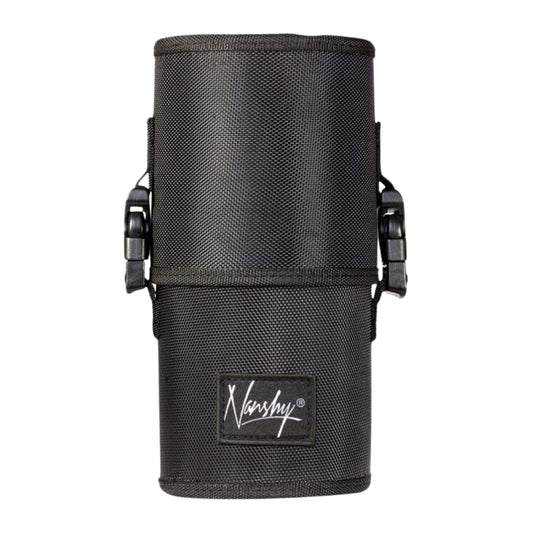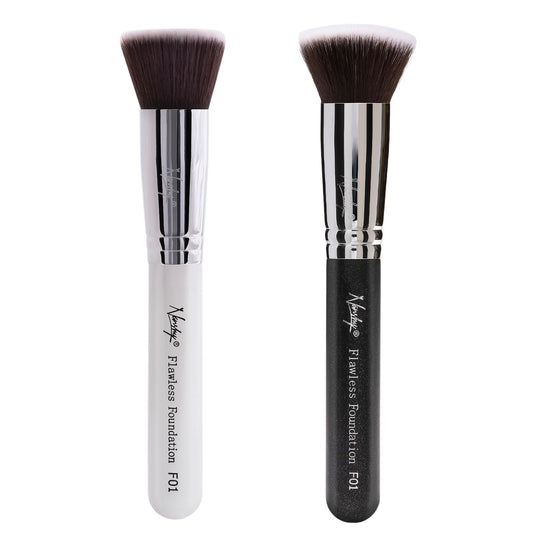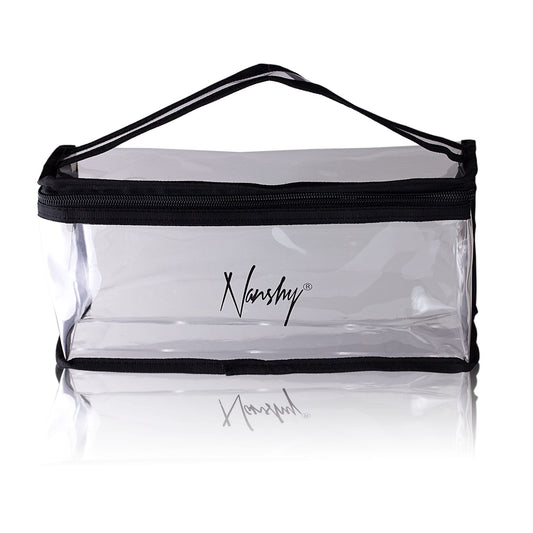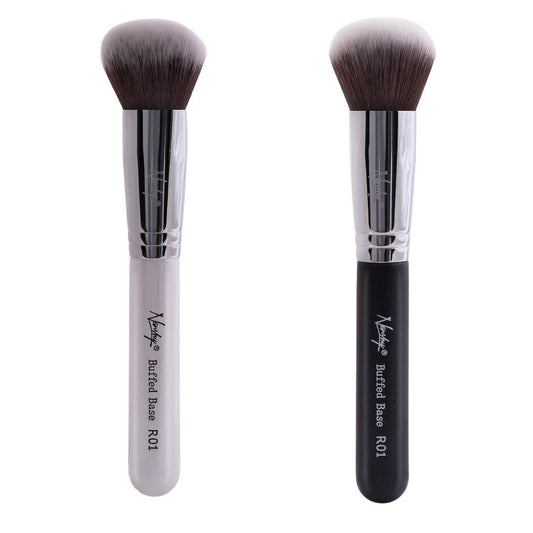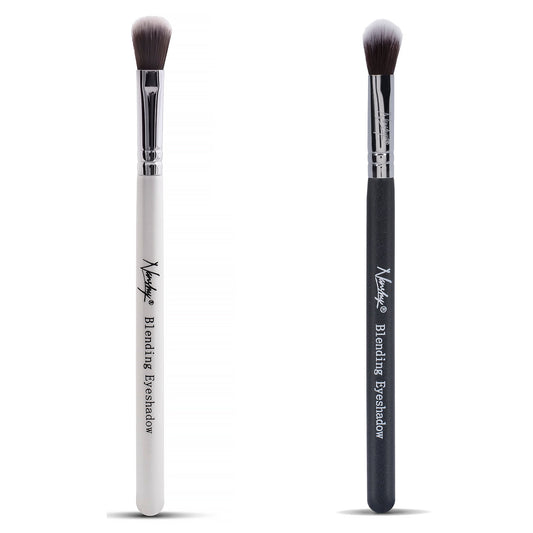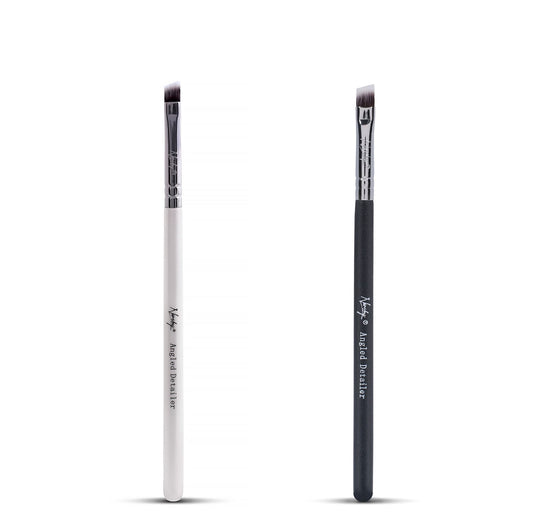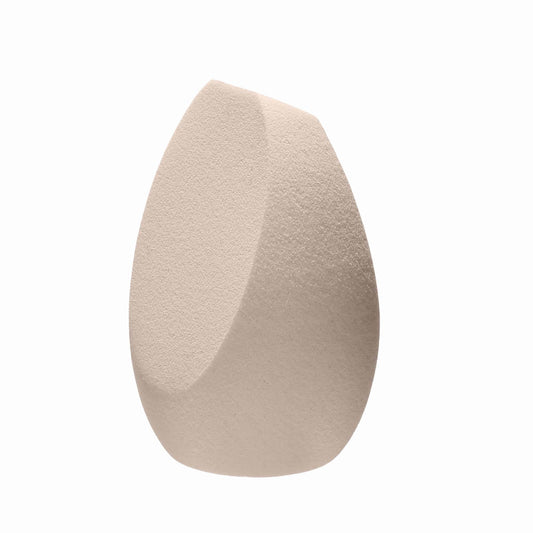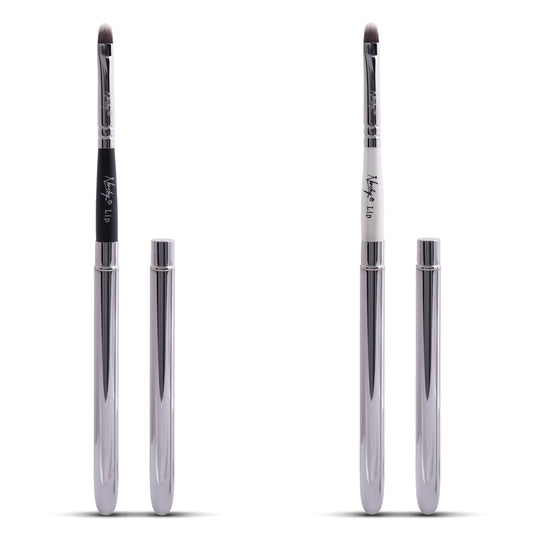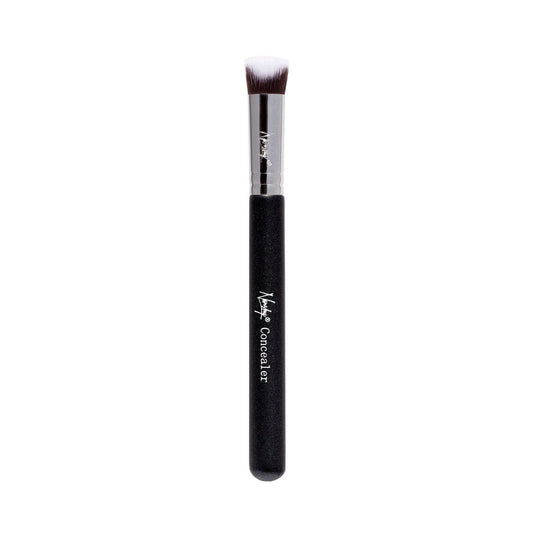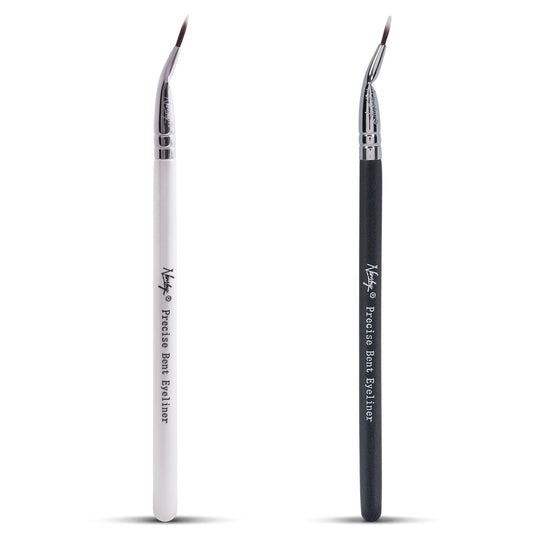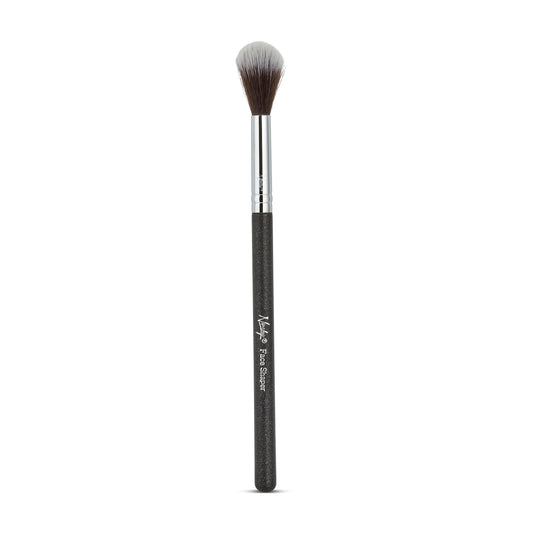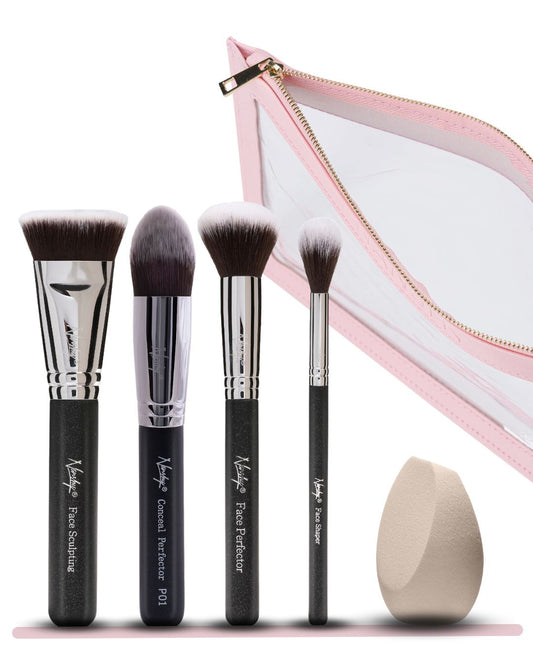How to Make Your Foundation Last All Day (Without Touch-Ups)
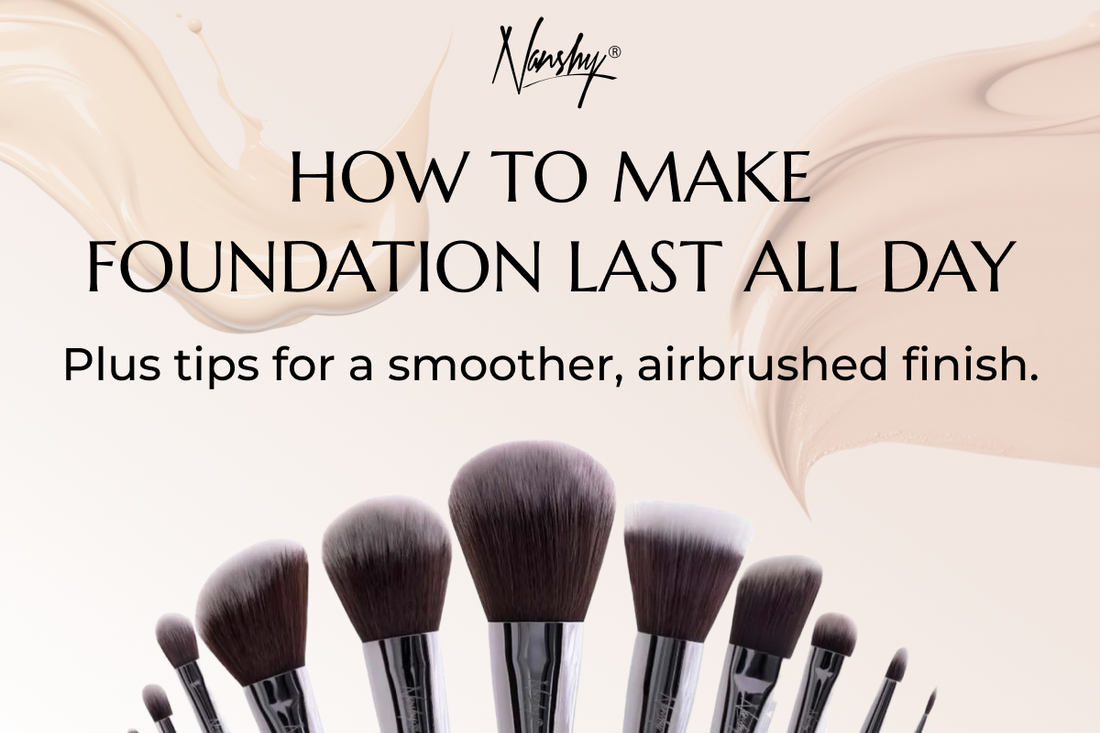
Ever looked in the mirror halfway through your day only to find your foundation has completely ghosted you? One minute you're looking flawless, the next you're dealing with patchy spots, oily shine, or that dreaded cakey texture. Whether you’re a MUA or not, we've ALL been there, and it's really frustrating.
Here's the thing though: your foundation fading by noon isn't some unavoidable curse. With the right prep, products, and techniques, you can actually make your makeup last from morning to evening without a SINGLE touch-up. No more bathroom mirror panic sessions or carrying your entire makeup bag everywhere you go. In this guide, we'll walk you through EXACTLY how to keep your foundation looking fresh all day long - because you deserve to feel confident and beautiful.
Why Foundation Fades
Before we get into the fixes, let's talk about WHY your foundation keeps disappearing in the first place. Understanding what's working against you is the first step to actually solving the problem.
Common Causes
Skin type (oily, dry, combo).
Your skin type is basically the boss of how long your foundation sticks around. If you've got oily skin, your natural oils break down makeup throughout the day, causing it to slide right off or separate into patches. Dry skin on the other hand, doesn't give foundation anything to grip onto, so it can look flaky or just fade into nothingness. Learn more in our blog about the types of foundation.
Environmental factors (humidity, temperature).
The weather is NOT your foundation's friend, trust us. High humidity makes everything melt faster because moisture in the air mixes with your makeup and natural oils, basically turning your face into a slip-n-slide. Hot temperatures make you sweat, and sweat is literally designed to push things off your skin - including your carefully applied foundation. Even dry, cold weather can mess things up by making your skin produce more oil to compensate, which then breaks down your makeup.
Product choices (wrong formula, insufficient prep).
Sometimes the problem isn't you or the weather... it's what you're putting on your face. Using a foundation formula that doesn't match your skin type is like wearing the wrong size shoes - it just won't work no matter how hard you try. And if you're skipping primer, not moisturizing properly, or using products that don't play well together, your foundation never even had a fighting chance. The wrong prep or product combo can cause separation, oxidation, or just straight up disappearing acts by midday.
The Impact of Touching Your Face
Here's a habit you probably don't even realize you're doing: touching your face throughout the day. Whether it's resting your chin on your hand during a boring meeting or rubbing your cheek, every time your fingers make contact with your face, you're literally wiping away your foundation. It's like hitting the reset button on your makeup without meaning to, and it's one of the sneakiest reasons coverage doesn't last.
Step 1: Prep Your Skin Right
Think of your skincare routine as the foundation for your foundation (see what we did there?) Without proper prep, even the best makeup products won't stand a chance. These steps might seem basic, but they're the difference between foundation that lasts and foundation that quits by noon.
Cleanse, Tone, and Moisturize
Starting with clean, balanced skin is non-negotiable. Cleansing removes overnight oils and any leftover product from yesterday, giving you a fresh canvas to work with. Toning helps balance your skin's pH and tightens pores, while moisturizing ensures your skin is hydrated enough that it won't try to absorb the moisture out of your foundation.
The key here is finding products that hydrate WITHOUT turning your face into an oil slick. Look for lightweight, gel-based moisturizers if you're oily, or richer creams if you naturally produce less oil. Let your moisturizer fully absorb before moving on to makeup - we're talking at least 5-10 minutes. If your skin still feels wet or greasy when you start applying foundation, you've used too much or didn't wait long enough. Either way, your foundation is about to slide right off.
Use a Mattifying or Hydrating Primer
Primer is basically the MVP of long-lasting foundation, yet so many people skip it. Don't be one of those people. The right primer creates a smooth barrier between your skin and foundation, helping everything stick better and last longer throughout the day.
Choosing the right primer depends entirely on your skin type. Got oily skin or live somewhere humid? Go for a mattifying primer that controls shine and fills in pores. Dealing with dry, flaky skin? A hydrating primer will smooth everything out and prevent your foundation from clinging to dry patches. If you're combination, you can even use different primers on different areas of your face - mattifying on your T-zone, hydrating on your cheeks. Primers also help minimize the appearance of pores and fine lines, giving you a smoother finish that looks more airbrushed.
Step 2: Choose the Right Foundation Formula
Not all foundations are created equal, and using the wrong one for your needs is setting yourself up for failure. The formula you choose matters just as much as how you apply it, so let's break down what actually works.
Full Coverage vs. Lightweight
Full coverage foundations are great when you need serious staying power or have a lot to cover - think acne, scarring, redness, or hyperpigmentation. They're thicker, more pigmented, and generally last longer because there's just more product on your skin. BUT they can also feel heavy, look cakey if you're not careful, and aren't always necessary for everyday wear.

Lightweight foundations (like BB creams, tinted moisturizers, or sheer formulas) are perfect for days when you want a more natural look or don't need heavy coverage. They feel more comfortable, let your skin breathe, and are way harder to mess up. The trade off? They don't always have the same staying power as full coverage options. That said, if you prep properly and set correctly, even lightweight formulas can last all day. Choose full coverage for events, long days, or when you need your makeup to look perfect for hours. Go lightweight for casual days, hot weather, or when you prefer a "your skin but better" vibe.
Long-Wear Foundations
If all day wear is your main concern, just make it easy on yourself and buy a foundation that's specifically designed to last. Look for labels that say long lasting, long wear, 24 hour" or "transfer resistant" - these formulas are chemically designed to resist breaking down from oils, sweat, and environmental factors. Very useful if you’re on a long trip (learn more in our blog about brush holders for travel).
The difference between regular and long-wear foundations comes down to the ingredients and how they're formulated. Long-wear options typically have stronger binding agents that help pigments stick to your skin, along with ingredients that resist water and oil. They might feel slightly different going on (sometimes a bit more matte or dry), but the payoff is worth it when your foundation still looks fresh at 5 PM. Just remember that these formulas can be harder to remove, so don't skip a proper cleansing routine at night.
Step 3: Apply Foundation Correctly
You can have the best products in the world, but if you're applying them wrong, you're basically wasting your time and money. Application technique matters more than most people realize, so pay attention to this part.
Tools Matter: Brush vs. Sponge vs. Fingers
Let's settle this debate once and for all: the best tool is whatever gives YOU the best results, but each option has its strengths. Brushes (especially dense, flat-topped ones like our Flawless Foundation brush) give you the most control and coverage, making them perfect for building up product exactly where you need it. They're also the most hygienic option since they're easy to clean and don't absorb as much product as sponges.
Sponges are great for a more natural, airbrushed finish because they blend everything seamlessly and sheer out the product slightly. The downside? Depending on the sponge, they can soak up a lot of product. Plus, if you're not cleaning them regularly (like, after every use), they become bacteria hotels. Fingers work in a pinch and the warmth helps foundation blend into your skin naturally, but it's harder to get an even, long-lasting application.
We actually have an article JUST to compare brushes vs sponges.
Use the Right Amount
More foundation does NOT equal longer wear - it usually just means cakier makeup that breaks down faster. Start with less than you think you need (seriously, just a pump or two), and build up coverage only where you actually need it. Most people only need full coverage on their T-zone and any problem areas, with lighter coverage everywhere else.
Apply foundation in thin layers, letting each one set slightly before adding more. This builds a more durable finish than slapping on one thick layer all at once. Work from the center of your face outward, blending well into your hairline and jawline so there's no obvious line where your foundation stops.
Step 4: Set It (Don't Forget!)
This is where most people mess up. You can do everything else perfectly, but if you skip setting your foundation, it's going to move around, fade, and generally betray you by mid afternoon. Setting is non negotiable for all day wear.
The Power of Setting Powder
Setting powder is literally designed to absorb excess oils and lock your foundation in place, so why would you skip it? Even if you have dry skin, a light dusting of powder in strategic areas will keep everything from sliding around. The key is knowing where to apply it and how much to use.
Focus on areas that tend to get oily or where your skin creases and moves a lot - your T-zone, under eyes, smile lines, and anywhere foundation tends to fade first on YOUR face. For oily skin, you can powder your whole face, but dry skin folks should stick to just these high movement areas. Use a fluffy brush (like our Buffed Base) and tap off excess before applying so you're not dumping powder onto your face. Press and roll the brush rather than swiping to really lock everything down without disturbing the foundation underneath.
Setting Spray
This is your final insurance policy against foundation fade, and honestly, once you start using it regularly, you'll wonder how you ever lived without it. Setting spray creates an invisible film over your makeup that helps everything meld together and stay put through sweat, humidity, and whatever else your day throws at you.
Hold the bottle about 10 inches from your face and mist in an X and T pattern to ensure even coverage. Don't spray too close or you'll get wet spots that disturb your makeup. Let it dry completely before touching your face or putting on more makeup - it should take about 30 seconds to a minute. Some people like to spray before AND after powder for extra staying power, which works great if you're going somewhere important or know you'll be out for hours. Just don't go overboard... you want a light mist, not a face full of liquid.
Step 5: Blot (Don't Reapply)
Here's the thing about touch ups: they usually make things worse, not better. Every time you add more foundation on top of what's already there, you're creating layers that cake up, separate, and look obvious. The smarter move? Deal with oil and shine without piling on more product.

How to Control Oil Without Layering More Product
When you start getting shiny throughout the day, your first instinct might be to reach for more powder or foundation. Resist that urge. Instead, use blotting papers to absorb excess oil without adding anything to your face. Just press the paper gently against oily areas and let it soak up the shine - don't rub or wipe, which will remove your foundation.
If blotting papers aren't cutting it, a very light dusting of translucent powder is okay, but use way less than you think you need. Too much powder on top of already-worn foundation is how you get that thick, cakey texture that makes everyone look older and makes foundation wear off even faster. The goal is oil control, not building up layers. And honestly, if you've done all the previous steps correctly, you shouldn't need much (if any) touch-up throughout the day anyway.
Conclusion
There you have it - everything you need to keep your foundation looking fresh from morning to night without constant touch ups. It really comes down to three things: prepping your skin properly, choosing the right products for your skin type, and actually setting your makeup instead of just hoping it'll stay put on its own.
The best part? Once you get these steps down, they become second nature. You're not adding hours to your routine, just doing things smarter. No more stressing about your foundation disappearing halfway through the day and start enjoying makeup that actually lasts. Your face (and your schedule) will thank you.
FAQs
How long should I wait between skincare and foundation?
At least 5-10 minutes. If your moisturizer or sunscreen still feels wet or tacky, your foundation will slide right off. Let everything fully absorb first.
Can I skip primer if my foundation is long-wear?
You CAN, but you shouldn't. Even long wear foundations perform better with primer. It's like insurance for your makeup, so why risk it? Your type of brush may also make a big difference here.
Why does my foundation look cakey by the end of the day?
You're probably using too much product or touching up with powder too often. Less is more, and blotting is better than adding more layers.
Do I need both powder and setting spray?
For all-day wear? Yes. Powder absorbs oil and locks foundation down, while setting spray creates a protective layer. They work together, not against each other.
Will my foundation last if I have really oily skin?
Absolutely, but you need to use mattifying primer, set properly, and keep blotting papers handy. Oily skin needs extra oil control, not different techniques.
How do I make foundation last in hot weather?
Use waterproof or long wear formulas, set with both powder and spray, and blot instead of adding more product. Also, keep your skincare light in summer - heavy moisturizers make everything slide off faster.




